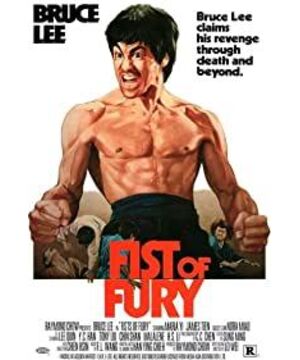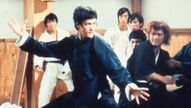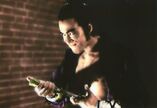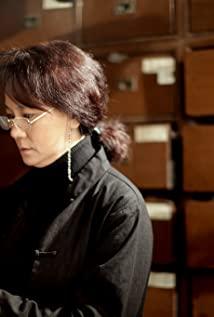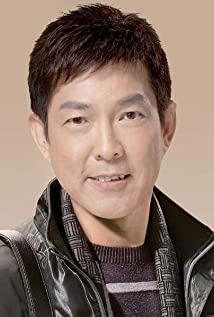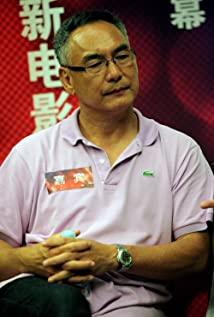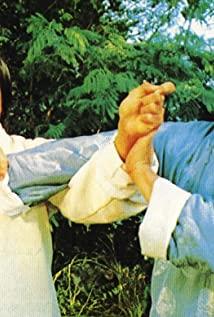In the history of world cinema, genre films characterized by rich dynamics and fast pace, such as European knight swordsman films, American western films, and Hong Kong martial arts films, are loved by many audiences. In particular, Hong Kong martial arts films are a unique type of Chinese movies, which are directly related to China's unique national martial arts and rich martial arts popular literature. For example, "Burning Red Lotus Temple" produced by Shanghai Star Company in 1928 was China's earliest martial arts film; "Fenzhuanglou" produced by Jincheng Film Company in 1938 was Hong Kong's earliest martial arts film. Judging from the dazzling martial arts movies in Hong Kong, the front and back can be divided into two development stages of martial arts movies and kung fu movies. The former takes the legendary swordsman character as the protagonist, and starts conflicts in the form of sword and weapon combat. One type of fighting method is to imitate the stage-style fighting action of opera; the other is the magic style of flying swords and spells, which is bizarre and absurd. With the development of science and technology, more use of photography special effects, sound, editing and other techniques, making martial arts movies changeable and unpredictable. Hong Kong shot 150 martial arts movies in the 1950s and reached 330 in the 1960s. Hong Kong has become the world of martial arts movies. In the 1970s, martial arts movies were replaced by new kung fu movies. "Kung Fu" is Cantonese, meaning boxing. It is mostly based on patriotism and national spirit. The main feature of its martial arts is unarmed combat. The actors must have considerable real martial arts skills. Hong Kong Kung Fu movies are constantly seeking new and changing, and some Kung Fu film directors have been produced. For example, Hu Peng is a link between martial arts movies and kung fu movies. He directed the 59-episode film "Huang Feihong" with the legendary deeds of Huang Feihong, a famous boxer in Guangdong martial arts at the end of the Qing Dynasty and the beginning of the Republic. , Real combat combat with real swords and guns replaced the previous false martial arts. In particular, Luo Wei's "Big Brother Tangshan" and "Jing Wu Men" directed by Luo Wei in 1971 and 1972, both starred Bruce Lee. These two films created a new look for Kung Fu movies. Bruce Lee's superb real kung fu shocked audiences around the world, which made Chinese kung fu movies go to the world, which is epoch-making in the history of Chinese movies. The movie "Jing Wu Men" tells the story of the hero Huo Yuanjia being murdered and his disciple Chen Zhen (played by Bruce Lee) avenging his master.
"Jing Wu Men" is a classic of Hong Kong Kung Fu movies in the 1970s. Its characteristics are first of all fighting with fists and kicks, each move is real kung fu, fist fighting, real shooting. The film vividly reflects Bruce Lee’s powerful and superb skills in Jeet Kune Do, which integrates Western boxing, karate, Wing Chun, and North Shaolin Kungfu, especially his volley-kicking three-legged serial legs and one-inch punch kungfu skills. The audience was dumbfounded. Secondly, Bruce Lee's kung fu movies are all about the theme of the Chinese defeating foreigners, showing the strong character and national spirit of the descendants of Long who will not succumb to any rape. In particular, when Chen Zhen broke the big sign that "Chinese and dogs are not allowed" and shredded the paper plaque of "Sick Man of East Asia" and stuffed it into the mouths of Japanese mob leaders, he developed national ambition and made millions of overseas Chinese proud. Another example is that at the end of the film, Chen Zhen uses his own flesh and blood to volley against the enemy's evil bullets. It is a very heroic scene, which gives the audience a strong shock and aftertaste. Because of Bruce Lee's wonderful real kung fu, Chinese kung fu movies have attracted the attention of the world. Bruce Lee is shining like a meteor in the history of Chinese cinema. Although short, he is splendid and created a mythical miracle. His superb martial arts and star temperament have left an indelible impression on the world. "Bruce Bruce is inimitable and difficult to reproduce. He will always be unique." No one has dared to say that he has surpassed his peak so far!
Bruce Lee's ancestral home is Jun'an Town, Shunde County, Guangdong Province. His father Li Haiquan is one of the four famous Cantonese opera actors. His mother He Aiyu is Eurasian. During the Anti-Japanese War, Li Haiquan took his wife to San Francisco (then called San Francisco) to temporarily live in the United States to avoid the chaos of the war. Li Haiquan led Cantonese opera classes to tour Chinatowns in the Chinese districts of New York and other cities. On November 27, 1940, He Aiyu gave birth to Bruce Lee at the Jackson Street Donghua Hospital in Chinatown, San Francisco. At the time, he registered an Americanized foreign name: Bruce Lee (BruceLee) when he was born in the hospital. Li Haiquan named his son Li Zhenfan. In order to prevent premature death, another girl named "Xiaofeng" was given. "Little Dragon" is the stage name he later adopted when he returned to Hong Kong as a child star.
At the end of February 1941, Li Haiquan returned to Hong Kong with his family and theatrical troupe to continue performing. Make your home at 218 Nathan Road.
Bruce Lee entered elementary school at the age of 6. He has a lively nature, precocious and precocious, but he is uneasy to study. Because his father Li Haiquan not only performed stage Cantonese opera, but also participated in the filming of Cantonese films, and he was very familiar with the film industry boss and director. Therefore, Bruce Lee has the opportunity to enter the film circle to play the role of Tong Jiao. He has guest appearances or starring in 20 films, showing very good acting talent and quality. "Xianluxiang" and "Lonely Man in the Sea" are two representative movies starring Bruce Lee at that time. In addition to acting in movies, Bruce Lee is particularly obsessed with martial arts. His father, a Cantonese opera martial artist, became his first martial arts enlightenment teacher. Bruce Lee was 14 years old and officially became a teacher of Wing Chun master Ye Wen. He practiced martial arts as hungry as he was thirsty, and forgot to eat and sleep.
According to legend, Wing Chun Boxing was created by five nuns, the master of Shaolin Temple Master Fang Shiyu, the ancestor of the Supreme Zen Master. Female boxing genres are all known for being soft and strong, but the five nuns have taken a new approach and created a new style of play: swift, fierce and fierce, injuring their opponents at the moment of shooting. Emphasize the punches and feet, the dots are in place, while blocking the opponent, they use their fists and feet to directly attack the opponent. In addition, all moves are made from the middle, turning his elbow and wrist punches into a core, and the two punches are not scattered, and the opponent's bridge hand is always kept from the outside of his double bridge hand. At the same time, the way of Wing Chun strikes is a straight "bowstring" line. Between the movement of the boxing path and the two points, the straight line is the shortest, striving to hit the opponent the fastest and most effortlessly.
Bruce Lee practiced martial arts to the point of crazy "wu idiot", and practiced boxing for more than five or six hours a day. In order to learn the sticky hand skills of Wing Chun, he set up a wooden stake at home and practiced diligently every day. In order to build a strong physique, use sandbag blocks to exercise. The boxing bench casts the steel-like hardness of a fist.
Bruce Lee is not only hardworking and hardworking, but also has a very high understanding. He can meditate on Master Ye Man's enlightenment like a Zen master, repeating his comprehension.
Bruce Lee is also good at absorbing the strengths of a hundred schools, not sticking to the stereotypes of each school. He knows that in martial arts, "one mountain has one high mountain" and "the strong one has the strong middle hand". He learned Hongquan from Master Tan, Caili Foquan from Master Chen, Neijiaquan from Liang Zipeng, Luohan Xinyiquan from Shaolin monks, Jiequan from movie warriors, Judo from Japanese soldiers, and Brother Edward Learn western boxing and learn western sword from his brother Zhongchen. Take the best of the crowd and blend in one's own body.
In March 1958, Bruce Lee was studying in high school. He signed up for the inter-school boxing competition in Hong Kong. After five rounds and beating six generals, he entered the finals against Charlie Irving, who won the championship for three consecutive times. On the ring, the opponent is tall and strong, while Bruce Lee is small, in sharp contrast. In the duel, Bruce Lee suddenly looked like a flea and a mud loach. There seemed to be no rules for punching. This kind of strange combination of Chinese boxing and Western boxing made Owen confused and unable to give full play to his advantages. His heavy punches often missed, eventually losing to Bruce Lee. Bruce Lee won the Hong Kong Intercollegiate Boxing Championship. He was only 17 years old.
His mother, Aiyu Ho, believes that Bruce Lee was born in the United States and is an American citizen who should receive American education, and strongly advocated that his son go to the United States to study. Another reason is because Bruce Lee challenged people everywhere and made too many enemies in order to prove the effectiveness of the kung fu he learned. His parents were deeply worried about his son’s safety. To prevent accidents, even his relatives and friends advocated that Bruce Lee leave Hong Kong and isolate the bad environment. . At this time, Bruce Lee clashed and quarreled with the popular Cantonese film "Liang Zi Ke" in the cafeteria in Kowloon City. "Jianzike" held a grudge against Bruce Lee, and colluded with the underworld forces to issue a secret killing order to Bruce Lee. Bruce Lee was not afraid, ready to play a "life and death battle!" Family and friends unanimously persuaded Bruce Lee to leave Hong Kong to avoid the limelight. The family forcefully forced Bruce Lee to take the President Wilson cruise on April 29, 1959, bid farewell to his relatives, and leave Hong Kong. On May 17, he arrived in San Francisco, the country where he was born 18 years ago. Everything is unfamiliar, everything has to start from scratch. Although his father entrusted him to his old friend Wen Shibo to take care of him, the first lesson the old man taught him like a godfather was the American values of "there is no free lunch in the world". Although he took in Bruce Lee, the problems of work, study, and life were solved by Bruce himself, and he was completely independent to make a living. Soon, a friend of his father introduced Xiaolong to a restaurant in Seattle to work. He worked 4 hours a day. With this kind of living security, he entered the high school of the local Edison Technical School in September of that year, mainly to improve his English. He worked part-time, not only worked as a waiter in a restaurant, but also found a job discounting newspapers for the Seattle Times to increase his income. Apart from going to school and working, he still accepts apprentices to teach Chinese Kungfu in the park, and he also gets some remuneration. He also defeated some famous Japanese karate boxers in demonstration performances in several schools and youth clubs and gained fame.
In his third year in the United States, Bruce Lee entered the Department of Psychology, University of Washington, Seattle for further studies in philosophy. The choice of volunteer reflects the two extremes of Bruce Lee's character: extreme dynamic and extreme quiet. Extremely dynamic, he chose martial arts; Extremely quiet, he obsessed with philosophy, pursued the mystery and mystery of various martial arts through philosophical contemplation, and absorbed his strengths into his own body. The subsequent creation of Jeet Kune Do is the result of the fusion of Kung Fu and philosophy.
Not long after Bruce entered the university, he applied to rent a corner in the campus parking lot for US$20 a month as a venue for him to practice martial arts and teach his apprenticeship. He recruits kung fu students with a tuition fee of 15 dollars per month, which attracts many kung fu enthusiasts. In April 1962, he officially opened a martial arts gym in the basement of an old building in Chinatown, Seattle, and soon recruited a group of martial arts students of different nationalities. Because Bruce Lee defeated the black boxing champion Jesse and beat the Japanese karate three-stage master in various competitions... His deeds attracted the Oakland Chinese martial artist Yan Jinghai. He is famous for his iron sand palm kung fu, he can smash 10 bricks together with his empty palm. He is twice older than Bruce Lee and is a senior figure in the martial arts industry. But he was impressed by Bruce Lee’s magical work, a Hong Kong youth, and made a special trip to Seattle to find the "Zhenfan Guoshu Museum". Regardless of his elder name and honor, he was willing to join Bruce Lee as one of his oldest disciples, and became an auxiliary Bruce Lee. A key figure in the development of Chinese Kung Fu career in the United States. He believes that Seattle is relatively conservative and backward, and California is the first place to open a national atmosphere. He urged Bruce Lee to go to Oakland, California to open a martial arts gym, there will be a big development, and accompanied Bruce Lee on an inspection tour. Bruce Lee finally decided to move to California to start the establishment. Martial arts hall. He couldn't wait for the final semester to get his college diploma, so he desperately sold Ford's self-driving car and furniture, and rushed to Auckland. With the help of Yan Jinghai, on August 3, 1964, the "Zhenfan Guoshu Museum" in Auckland officially opened classes. In order to expand his influence, Yan Jinghai used his relationship to recommend Bruce Lee to participate in the guest performance of the "International Karate Championships" on the California Long Beach where martial arts masters gathered. His wonderful martial arts skills made the 24-year-old rookie look at him with admiration. Lee Jun-jeou, the father of Korean Taekwondo, took the initiative to visit Bruce Lee and became good friends with each other. Martial artist Yilu Shandu, who has won the "Hall of Heroes of the Black Belt" award four times, did a sparring with Bruce Lee for performing Kung Fu. He thinks Bruce Lee is simply a strange man! He said: "I have learned all these techniques, but every move of mine is within his (referring to Bruce Lee) odds of winning. He had expected it before you made the move. It was really helpless!" Yilu Shan He worked hard to learn Jeet Kune Do from his teacher Bruce Lee, and finally obtained the highest level of Jeet Kune Do three-stage certificate issued by Bruce Lee himself. Ilu Santo also taught Bruce Lee his stunts, nunchaku and short baton skills, to each other's mentors.
After that, Bruce Lee was invited to participate in the performances of the national karate competitions in Washington and New York, and the demonstration performances of the "Martial Arts Carnival" in Panama, and his influence expanded. Therefore, in February 1967, Bruce Lee opened his fifth "Zhenfan Guoshu Museum" in the United States at 628 College Road, Chinatown, Los Angeles. It changed the original popular policy of running the museum and turned to the elite group of martial arts, which greatly increased the threshold for recruiting disciples. Students must have considerable martial arts qualifications and status to apply for the exam, and the tuition fee is quite expensive, 150 US dollars per hour. This greatly improved Bruce Lee's martial arts gymnasium and his status in the American martial arts world. Subsequently, some Hollywood action actors came to worship Bruce Lee as their teacher, in order to show their kung fu on the screen after further studies. First, the famous action star Steve McQueen came to apprenticeship. He is a top action star and has performed well in many westerns and police films. He believes that Bruce Lee's fighting skills can make up for his lack of courage and lack of dexterity in kung fu. In this way, Bruce Lee accepted the first star disciple McQueen.
There is also the top American karate master. Chuck Rolles, who won the "National Karate Open" in Madison Square Garden in New York, watched Bruce Lee’s demonstration performance. He was deeply impressed and determined to learn Chinese Kung Fu from Bruce Lee. The two became Friends who have studied fighting theory and actual combat training have greatly improved each other's martial arts.
Joe Lewis, another runner-up in the National Tournament, also worshiped Bruce Lee as his teacher religiously. In addition, Mito Uehara, the editor-in-chief of the authoritative American martial arts magazine "Black Belt", is a senior in the martial arts industry, and he also took the initiative to visit Bruce Lee as his teacher to learn Chinese Kungfu.
At the same time, Bruce Lee publicly announced that this new set of boxing techniques he had developed through a long journey was "Je Kune Do". It is the crystallization of Bruce Lee's insights and thinking about life, martial arts, and philosophy. The three characters "Je Kun Dao" mean "the way to block the opponent's fist" and "the way to volley the opponent's fist". It combines the grid and counterattack in traditional martial arts moves, and the defense and counterattack are carried out at the same time. This is a unique martial arts system summed up by Bruce Lee through his actual combat experience with various martial arts masters. It has Chinese characteristics, but also integrates various boxing techniques and techniques, and has rich philosophical connotations. Jeet Kune Do is based on Wing Chun and the North and South Chinese styles of boxing. It draws on the essence of various excellent martial arts in the world, such as Western boxing, karate, taekwondo, and Muay Thai. It also uses Oriental philosophy as its theoretical basis for non-specific moves and adapts to changes. Fighting technique. "Je Kun Do is all-encompassing, but not encompassed by all things." He has Bruce Lee characteristics: simplicity, swiftness, flexibility, pursuit of practical results, and a hit.
Bruce Lee's unique Jeet Kune Do has become famous throughout the American martial arts world and has formed a Chinese kung fu craze. He has been in the United States for 12 years, and he always has a wish to open the door of Hollywood and let Chinese Kung Fu use Hollywood movies to promote it to the world. Through the apprenticeship of Hollywood action stars, he was active and determined to be on the Hollywood screen, but with many difficulties. In the 1960s, the promotion of television severely impacted movies, and the Hollywood film industry fell into an unprecedented low, and many filmmakers faced the danger of unemployment. In addition, due to the racial discrimination tradition in the United States, front-line white stars may not be able to find good roles. A Chinese kid like Bruce Lee is naturally regarded as an outlier. Wanting to star in a movie in Hollywood is not easy!
Hard work pays off. With the persistence of Bruce Lee's unremitting spirit and the enthusiastic help of many friends, Bruce Lee finally signed a performance contract for the TV series "The Green Hornet" with 20th Century Fox in June 1966, playing the role of No. 2 in the film: Japan A corner of the ethnic driver "Garten". After the screening, Bruce Lee's boxing skills were dazzling, and his darts and nunchakus were extremely magical. Chinese Kungfu has opened the eyes of Western audiences and amazed them. They realized for the first time that, in addition to Japanese judo and karate, the ancient oriental martial arts also had Chinese kungfu. Bruce Lee finally realized his dream of entering Hollywood.
In 1968, Bruce Lee played a supporting role in the MGM company film "Scandal on Blood": a kung fu professional killer of Chinese underworld. In 1971, he played the role of a Chinese antique dealer proficient in Jeet Kune Do in the first episode of the Paramount TV series "The Detective Dog".
Bruce Lee's dream of starring in Hollywood movies to show the Chinese spirit and Chinese Kungfu finally became a mirror image. Disillusionment, returning to Hong Kong to develop, but it made him a new village, and embarked on the most glorious road to shadow in his life.
When Bruce Lee returned to Hong Kong from the United States, he was invited to the Hong Kong TVB "Happy Tonight" program and Hong Kong Lai's TV program "Golden Jade Mantang" to accept interviews, and cooperated with martial arts masters to perform Jeet Kune Do, which caused great repercussions in Hong Kong. Zou Wenhuai, the savvy owner of Golden Harvest Pictures, immediately realized that Bruce Lee would be a star in Kung Fu movies in the future, and he could not miss the opportunity. He immediately sent a female cadre Liu Lianghua to the United States and mobilized Bruce Lee to return to Hong Kong to join Golden Harvest to shoot the film and airmail the script. To Bruce Lee. In this way, Golden Harvest Pictures and Bruce Lee successfully signed a contract for the shooting of two Kung Fu movies "Big Brother Tangshan" and "Jing Wu Men". Each movie is paid $7,500. After Li returns to Hong Kong, he can withdraw all the pay for "Big Brother Tangshan" and one-third of the pay for another movie, and the rest will be paid after fulfilling all the contracts. This also happened to solve Bruce Lee's dilemma of financial constraints at that time.
A piece of "Big Brother Tangshan" starring Bruce Lee, which truly reflects the national spirit and Chinese kung fu, was filmed in the summer of 1971 in a village in northern Bangkok, Thailand. The film is directed by Luo Wei, and Bruce Lee plays the Tangshan brother Zheng Chaoan. The protagonist Zheng Chaoan was forced to work in an ice factory in Bangkok because of his livelihood. He discovered that the factory was originally a drug trafficking center for drug lords, and some overseas Chinese brothers were bullied by drug dealers and hooligans. Although Zheng Chaoan has martial arts, he has always endured his anger and hatred. When his workers were killed, beaten, and unbearable, he erupted like a volcano with his fists and feet protruding wildly, causing the villains to flee. When he discovered that all the workers had been murdered, Zheng Chaoan, who was extremely angry, broke into the tiger's den alone, and fought desperately with the powerful and sinister boss of martial arts, and finally killed the heinous boss with an iron punch. Bruce Lee's kung fu was brought to the fullest by the role of Zheng Chaoan, which was very pleasant. Bruce Lee's kung fu and acting skills are top-notch.
"Big Brother Tangshan" was officially released on October 30, 1971. The first round of screenings was 23 days, and the box office revenue in the port and port reached 3.2 million Hong Kong dollars, breaking local box office records in Taiwan, Macau, Singapore, and Thailand.
The great commercial success of Golden Harvest's film has made the filmmakers stunned.
The premiere night of "Big Brother Tangshan" became the most glorious night in Bruce Lee's life. The owner Zou Wenhuai accompanied Bruce Lee and his wife to sit in the VIP table, immersed in the cheers of the audience. This night changed everything in Bruce Lee's life. His arduous pursuit for more than ten years was rewarded this night. He really felt that the most ideal place to promote Kungfu through movies is his native China.
"Jing Wu Men" is a film tailor-made for Bruce Lee that best reflects Bruce Lee's personal style. The screen image of Chen Zhen he created has become a classic artistic image in the history of Chinese film. On March 22, 1972, the film was officially released, with unprecedented grand occasions, with the first round of box office reaching more than 4.4 million Hong Kong dollars. "Jing Wu Men" was released in Singapore, and the response was like a nuclear explosion. The crowds of ticket buyers caused serious traffic jams. In the Philippines, the film was shown in theaters for 6 months, breaking the record for all local films. In the United States, which has always rejected imported movies, the first-round release of "Jing Wu Men" also caused a sensation. This is the first time that a Hong Kong-produced film has caused such a big response in the United States. "Jing Wu Men" also won the 1972 Taiwan Golden Horse Award for Best Feature Film, and Bruce Lee won the Special Award for Best Skill. As a result, Bruce Lee became the most famous Uranus superstar.
At the end of 1971, Bruce Lee founded his own Concord Film Company in Hong Kong, which was a subsidiary of Golden Harvest. Zou Wenhuai was also the chief owner of Golden Harvest and the second company. In 1972, Concord and Golden Harvest Co. jointly produced a piece of "The Tiger Crossing the River", which was written, directed, and acted by Bruce Lee, and went to the Colosseum in Europe to film location. This was the first overseas filming in Hong Kong. Bruce Lee played the protagonist Tang Long in the film, creating a new style of witty kung fu film. The film was officially released on December 30, 1972. The box office in the first round exceeded 5 million Hong Kong dollars, breaking the Hong Kong box office record once again.
Bruce Lee returned to Hong Kong and starred in three consecutive movies with great success, not only popular in Asia, but also in big cities such as Beirut, Rome, Sydney and other big cities like Bruce Lee. How can the most business-eyed Hollywood bosses on the other side of the ocean remain indifferent! Warner Company first waved to Bruce Lee. They planned a Chinese-style action film script for Bruce Lee, and formally sent a letter to invite Bruce Lee to star in this film. Boss Zou Wenhuai wisely advised Bruce Lee to cooperate with Warner in the name of Concord Corporation. Not only did he receive personal remuneration, but the company shared dividends with them in proportion. In this way, Jiahe also gains benefits. Bruce Lee flew to the United States to negotiate specific matters with him, and he received the highest courtesy of Warner's reception of superstars. During this period, MGM, Columbia, Fox and many other major film companies visited and offered to cooperate with Bruce Lee in filming. Contrasting with the situation in Hollywood over the past ten years, Bruce Lee can't help but feel full of emotion.
After bargaining negotiations, on November 23, 1972, Bruce Lee finally signed a cooperation agreement with Warner for the filming of "Dragon Fighting Tiger". The agreement determines that Warner will invest 500,000 US dollars (later increased to 850,000) to shoot this film. The whole film was shot in Hong Kong. Bruce Lee is solely responsible for the martial arts scenes and action arrangements of the film. Warner is responsible for the production of the English version and the international market; Concord is responsible for the production of the Chinese version, and Jiahe is responsible for the Chinese version distribution market.
In February 1973, "Dragon Fighting Tiger Fighting" officially started shooting. It was originally scheduled to be completed in 6 weeks, but it actually took 10 weeks to shoot.
The storyline of the film follows the pattern of going deep into the tiger's den to investigate rape and hoeing. A Shaolin martial arts traitor surnamed Han came to Lizhai on a deserted island as a camp. In the name of opening a martial arts school, he started an illegal act of trafficking in heroin and drugs. The police must verify and verify before he can be apprehended. However, Han prohibits anyone from bringing weapons on the island. The police can only send unarmed and powerful spies to the tiger's den to complete this task. The police went to Shaolin Temple to invite a Kungfu master (played by Bruce Lee) out of the mountain. The Shaolin Temple abbot also deliberately cleaned the door and got rid of it. The traitor disciple, taking the precepts of Buddhism upright, supported Li to verify the crimes.
After Li Dengdao, he spied on the island and discovered a huge drug factory underground in the garden. There are still many people and girls in the subway prison. Han forced them to undergo drug trials and become addicted to drugs, and then used them to sell drugs.
It was when South Korea invited American wrestlers and martial arts masters from all over the world to come to the island for martial arts competitions. Li participated in a martial arts competition and used it to eliminate evil. Bruce Lee's kung fu shown in this film is brighter and more unrestrained than in the past. The climax of the fight was that Li overpowered the cobra entrenched at the entrance of the cave and fought against the demons alone in the dungeon. His fists, nunchakus, and long sticks hit new realms, and the group of villains were defeated by Li Xun's fierce fists. Li's final fierce battle was a duel with the demon Han. Li forced Han into a maze studded with 8,000 lenses. The two rivals fought a life and death battle in the magical maze. The scarred Li finally defeated Han. In the film, the most exciting part of Bruce Lee Jeet Kune Kung Fu is fully demonstrated, and the martial arts are brought to the highest level: "Hidden skills invisible".
The director of the film, Robert Goros, sighed and said to reporters: "What surprised me most is how Bruce Lee played so well! Bruce Lee didn't need to "act" with a trick. He was full of dramas. He just did whatever he wanted. That's it. He really surprised me. He is a good actor and an outstanding martial artist." From the filming of this film, Gaoluos became a Hollywood "selling director" in one fell swoop. He has never been so successful, he said. He had to "thank Bruce Lee."
On August 29, 1973, "Dragon Fighting Tiger Fighting" premiered at the Chinese Theater in Hollywood, Los Angeles, and immediately overwhelmed American audiences. The theaters in the United States are full. Warner's small production cost has won huge returns, and it has set a cumulative box office revenue of 230 million US dollars in the world. The Hollywood high-investment action blockbuster "Destroyer" at the same time was eclipsed.
"Dragon Fighting Tiger Fighting" further established Bruce Lee's status as an international superstar. What makes the world very regretful is that Bruce Lee did not see his new glory. Just a month before the release of "Dragon Fighting Tiger Fighting", on the night of July 20, 1973, Bruce Lee suddenly fell into a coma and died. Died young at the age of 32. A radiant superstar has fallen! The world was shocked by the shock.
View more about Fist of Fury reviews


